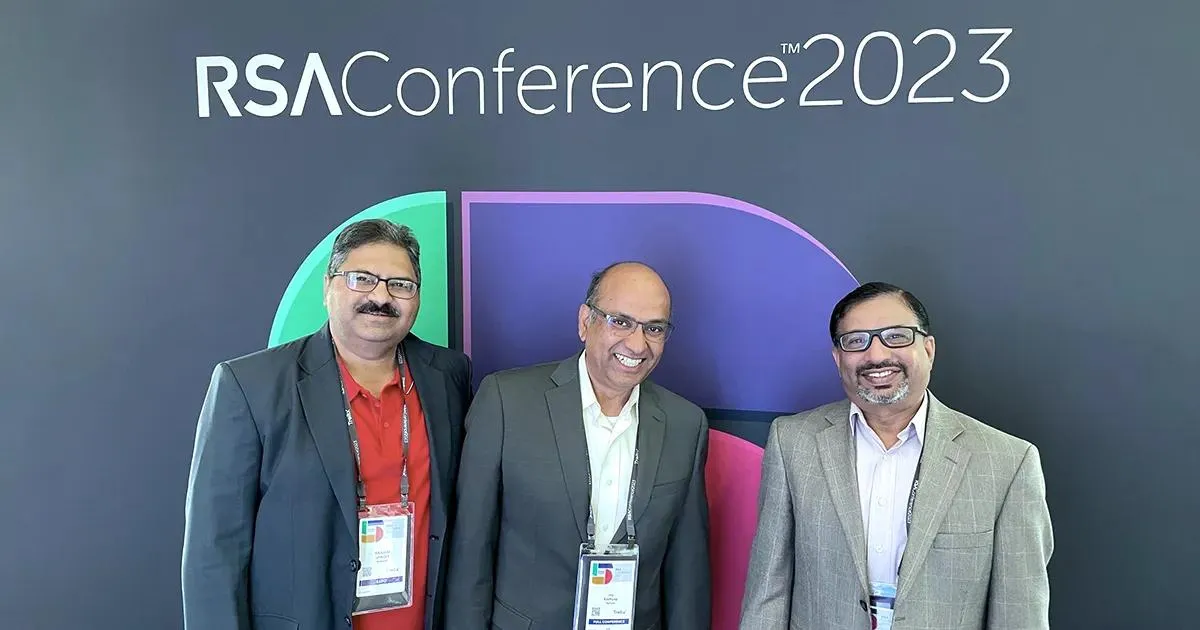



Chief Information Security Officers (CISOs) are in a tough spot these days. Emerging technologies such as generative AI, the Internet of Things, and machine learning (ML) have created massive operational shifts in how fundamental operating procedures work within enterprises.
These, combined with movements like the adoption of the hybrid workplace, have significantly expanded the surface area exposed to “bad actors” with malicious intent. This new age demands revamped and more robust cybersecurity strategies. Adding fuel to that already-raging fire is the constant dearth of qualified cybersecurity professionals who can help safeguard and defend businesses.
To keep up with this dynamic and volatile cybersecurity environment, security operations centers (SOC) are being pushed to continuously evolve.
Read on as we shed light on the top trends defining the continuing evolution of SOCs and the steps CISOs can take to build next-gen SOCs.
Emerging Cybersecurity Trends
Cybersecurity, like every other enterprise space, is in a race with the environment around it. Despite the many new measures organizations take to strengthen their cybersecurity maturity and posture, attackers continue to launch successful attacks, which lead to several irreversible losses.
These threats are becoming more sophisticated by the day as they leverage advanced tools and become more creative. That’s why a robust and advanced detection and automated response mechanism such as Next-Gen SOCs should be in place to identify and quickly respond to anomalies that are missed or bypassed by security measures in the first stage of filtering and prevention
Let’s look at the top three influences on cybersecurity that are impacting every organization across the globe.
Evolving technology innovations
As advancements in technologies like artificial intelligence (AI) continue to emerge, hackers are leveraging them to discover vulnerable targets, infiltrate malware, and automate attacks.
By gathering and analyzing large amounts of data from social media, enterprise databases, and customer interactions, hackers are better equipped to find patterns in the data and launch more targeted attacks. “Brute force” attacks are becoming more practical in the AI-led age.
Generative AI is also helping hackers write AI-powered phishing emails, generate deep fakes, and sabotage security systems and teams with false positives.
Expanding threat landscape
The cyberattack surface has vastly expanded in the last few years. As companies continue to advance their hybrid work models, more devices are getting integrated from around the globe.
This has made the overall IT perimeter far more complex and dispersed, with on-premises, cloud, and edge computing systems constantly accessing enterprise networks. From an SOC perspective, this evolving threat landscape demands greater visibility and a need for better threat detection, analysis, and incident response.
Widening cybersecurity skills gap
While more and more hackers are launching innovative attacks, companies are struggling with a widening cybersecurity skills gap. Even the most prosperous organizations are in a state of despair due to the cybersecurity skills shortage which affects over 71% of them. While it is estimated that by 2025, there will be 3.5 million cybersecurity jobs open globally, for every two jobs, a third goes unfilled.
Top Considerations for CISOs
As CISOs look to build or grow their SOC, there are several factors to keep in mind. Here are the top considerations:
Adopt a Human-Centric SOC Design
Cybersecurity incidents are not just the result of hacking attempts but also poor workforce practices that put the entire organization at risk. To minimize the frequency and impact of incidents, CISOs must take a human-centric approach to designing their new-age SOCs.
Such an approach will ensure that SOCs are equipped to detect and flag not just instances of malware or phishing but also insecure actions taken by employees. It is estimated that by 2027, 50% of CISOs will adopt a human-centric SOC design to minimize operational friction and maximize control adoption.
Enable a Zero-Trust Mindset
As the threat landscape evolves, CISOs must embrace the zero-trust SOC mindset. Through continuous verification and validation of every user and device, CISOs can restrict attempts to access network resources.
This will help limit instances of data exfiltration, ensure asset compliance, and protect enterprise and personnel data. Zero-trust will also reduce the attack surface while providing CISOs with granular control over the cybersecurity landscape.
Automate Threat Detection and Response
To cater to a hybrid technology environment, CISOs must automate their threat detection and response (TDR) tactics. They must embrace the many innovations in AI to automatically escalate or close alerts and accelerate security response timelines.
AI can also pave the way for 24/7 automated monitoring, investigation, and remediation of security alerts, helping CISOs cut through the noise while taking immediate action for critical threats.
Invest in Intelligent Systems
One of the biggest problems CISOs deal with is alerts. The presence of too many devices means that too many alerts reach the SOC, causing unnecessary stress and tension for security operators.
Investing in intelligent systems can ease the strain on security teams while enabling much-needed visibility into the current state of cybersecurity. Using a single pane of glass, CISOs can gain deeper business insights into their networks and thwart attacks in time.
Ensure Continuous Threat Exposure Management
Today’s cyber attackers are pivoting quickly, leaving CISOs scrambling to automate controls and deploy security patches to keep up. To improve response to attacks, CISOs must build a continuous threat exposure management program, including threat intelligence feeds from reputed sources that detect and actively prioritize threats as well as provides advisory.
By continually and consistently evaluating the accessibility, exposure, and exploitability of digital assets, CISOs can accurately plan their assessments and remediation efforts with emerging threat vectors.
The enterprise IT ecosystem has become a complex maze of cloud, on-premises, and hybrid platforms and devices. But the presence of so many systems means more IT assets to secure, more threat vectors to scan, and more attempts at attack to thwart. The continuous inflow of alerts is rendering even the most sophisticated SOCs ineffective.
Given the current state of cybersecurity, CISOs need to be cognizant of emerging trends. They must be laser-focused on updating and adapting their threat detection and response mechanisms and embracing new and improved ways to deal with modern-day attacks. Embracing these tips is a great way to reshape SOCs and transform security operations.
Are you prepared to up your SOC game?






 View Previous Blog
View Previous Blog






